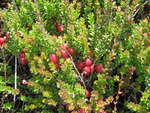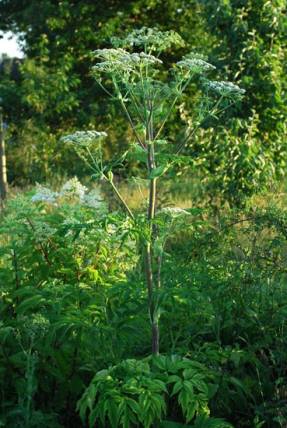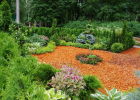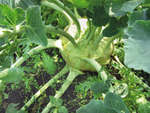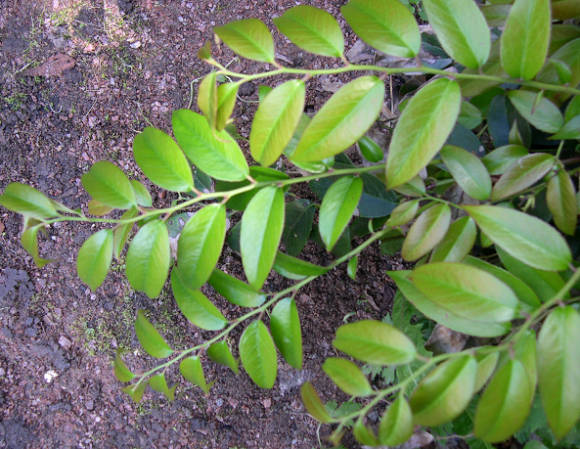 |
Ivy budra (Glechomahederaceae L.) got its name from the leaves that resemble ivy in appearance. It is a low, widespread herb from the Lamb family (Labiaceae). The maximum height that it reaches is 60 cm, but more often the plant does not exceed 15-20 cm. The stems are creeping, and the flowering shoots are ascending. The leaves are petiolar, the lower ones are reniform, the upper ones are reniform heart-shaped. Flowers 2-3 in axillary rings, purple or bluish-purple, rarely reddish or white. The smell of the plant is specific, strong and rather sharp.
It grows in gardens, among bushes, at the edge of a forest, under fences, in fields, along roads, in cemeteries. Blooms from the second half of April to July.
It is so widespread that it is probably easier to say where it is not - in the Far North and in the hot south. Interestingly, in America initially it was not. She got there with white settlers who brought her as a salad and medicinal plant.
Cm. Gadazeli with Budra, Potato casserole with Budra.
Medicinal properties of Budra
The use of Budra in Europe goes back millennia. Galen used it in the form of compresses for inflammation of the eyes, and the English phytotherapist D. Gerald - "from tinnitus." Hildegade of Bingen recommended Budra for headaches and ear pains. In the "New Herbalist" L. Fuchs (1543), it is described as a remedy for liver diseases, especially jaundice. In addition, in European herbalists, it is recommended for kidney disease and indigestion.
The Saxons used it for flavoring and clarification in brewing before hops appeared. Bitter substances present in the plant, among other things, contribute to the better preservation of the drink.
 |
The entire plant is harvested during flowering. It is considered an expectorant and healing agent.
The aerial part contains flavonoids (cimaroside, cosmozin, hyperoside, isoquercetin, luteolin-7-diglycoside), triterpenoids (ursolic acid, β-sitosterol), relatively little essential oil (0.03-0.06%), the main components of which are pinocarvon , menthone, pulegon, D-germacrene, germacran, cis-ocimene, sesquiterpenes (glechomafuran, glechomanolide), rosmarinic acid, up to 3-7% tannins, bitter substances glekhomin and marrubin, saponins, lectin, reminiscent of those in legumes.
The plant preparations have an anti-inflammatory effect, which is manifested by the triterpenes present in the raw material.
In scientific medicine, this plant is not used, although a lot of research has been carried out in various directions, up to oncology. In particular, in experiments in vitro, sesquiterpene lactones exhibited a pronounced antitumor effect. But in folk medicine it is widely used, primarily the leaves and the aerial part. In Italy it is used for arthritis and rheumatism.
Budra is widely used in Chinese medicine for a variety of diseases: cough, erysipelas, abdominal pain, dysfunctions in women, dysentery, jaundice.
In homeopathy, it is used for diarrhea and hemorrhoids.
Contraindications and side effects. Negative health effects and side effects are usually not observed when used at the recommended therapeutic doses. Fatal poisoning has been reported in horses eating large quantities of fresh plants. Mice fed only Budra died within 3-4 days. But I think none of us would think to eat only this plant.
 |
And yet, despite the fact that modern books on the use of wild plants in food unanimously, presenting it as a salad culture, it is better to be careful.The components of essential oil contained in it can have a strong irritating effect on the gastrointestinal tract and kidneys, and in large quantities exhibit hepatotoxic effects (in particular, the pulegon present in the oil, although there is much less of it in the bud than, for example, in marsh mint) ...
Cm. Gadazeli with Budra, Potato casserole with Budra.
Infusions of Budra taken orally for inflammation of the mucous membranes in the gastrointestinal tract and diarrhea. As an emollient - for bronchitis and symptomatic treatment of cough, as well as a diuretic for diseases of the bladder and urinary tract, including kidney stones.
Tea 5 g of dried leaves per glass of boiling water are used for colds, catarrh of the upper respiratory tract and bronchitis.
Budra is often used in combination with other plants that have a similar effect. For chronic lung diseases, a good remedy is infusion from the following mixture: 2 tablespoons of poplar buds, the same number of budra leaves and 1 tablespoon of black elderberry flowers are steamed overnight with three glasses of boiling water, and during the day they are drunk in 5 doses.
Liquid extract prepared in 25% ethanol in a 1: 1 ratio, that is, dry raw materials and alcohol in equal weight amounts. This tincture is convenient to store and dispense. Take it 20-30 drops 2 times a day with a little water.
A good expectorant is a mixture of budra leaves and agaric grass, taken equally: 3 tablespoons of the mixture are poured with 3 cups of boiling water and soared all night. During the day they drink in 5 receptions.
Externally steamed leaves are applied in the form of a compress for abscesses, for the healing of wounds, ulcers and skin diseases. Well-crushed and turned into a pasty mass, Budra leaves are applied to the abscesses. The infusion of the plant can be a good external remedy for problem skin.
Budra has acaricidal action. Places of the skin infected with an itch mite are rubbed 2 times a day with a strong tincture of budra herb in table vinegar.
With lacrimation and inflammation, cloths soaked in a strong infusion of budra leaves are applied to the eyes.
Growing for decorative purposes
Currently, it is used as an ornamental ground cover plant, primarily its variegated form, which is decorative for almost the entire season. It is a great plant for shaded areas, but it is sometimes even grown in containers. The plant propagates by pieces of shoots with adventitious roots. They are separated from the mother plant and planted, slightly deepening in a previously prepared place or just under the trees. When planting, watered.
 |
Despite all its unpretentiousness, Budra does not like heavy soils and bright sun. Interestingly, the plant does not tolerate excess boron well. In addition, it is damaged by some pests and is affected by rust and powdery mildew.
But in agriculture, it is considered a weed, which is fought with herbicides in order to avoid poisoning of farm animals.

